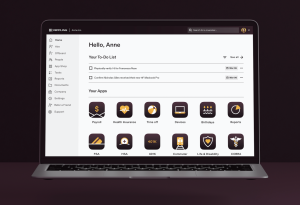Apple Wins Patent to Take On Google Glass
![]() When Google unveiled Project Glass, now dubbed Google Glass, they stole the spotlight garnering curiosity as to how the heads-up display gadget would work. Many question if the small panes will be enough for users to enjoy augmented reality capabilities, but the picture soon became clearer. On the first day of this year’s Google I/O developer conference, we got a live demonstration of how Google Glass could fit into a person’s life, its design so sleek and lightweight that it won’t get in the way of your activities but will be there when you need it.
When Google unveiled Project Glass, now dubbed Google Glass, they stole the spotlight garnering curiosity as to how the heads-up display gadget would work. Many question if the small panes will be enough for users to enjoy augmented reality capabilities, but the picture soon became clearer. On the first day of this year’s Google I/O developer conference, we got a live demonstration of how Google Glass could fit into a person’s life, its design so sleek and lightweight that it won’t get in the way of your activities but will be there when you need it.
Not one to share the spotlight, Apple was granted a patent for peripheral treatment for head-mounted displays – a technology that’s somewhat similar to Google Glass but the patent has a larger scope.
Apple’s patent suggests that the iPhone maker can produce a variety of head-mounted display gears such as helmets, sunglasses or even visors. And unlike Google Glass, the HMD can either have one or two small CRT, LCD or OLED displays with magnifying lenses and other associated optical elements.
The lenses and other optical components work by giving users the perception that the images are from afar to prevent eyestrain. In HMDs with only a single display, the image is projected through optics that split the image into two identical images, then redirects each image to the respective eye. While HMDs with two displays show stereoscopic images, giving them depth by simulating the angular difference between the images viewed by each eye when looking at an object, due to the different positions of the eyes. Other HMDs can be used to view augmented reality or those see-through images that can be superimposed in the real world – like Google Glass.
But Apple seems to be targeting professionals such as surgeons or emergency responders with their latest patent filing.
“Some examples include applications in surgery, where radiographic data, such as CAT scans or MRI imaging can be combined with the surgeon’s vision. Military, police and firefighters use HMDs to display relevant tactical information, such as maps or thermal imaging data,” the patent stated.
“Engineers and scientists use HMDs to provide stereoscopic views of CAD schematics, simulations or remote sensing applications. Consumer devices are also available for use in gaming and entertainment applications.”
Another thing that differentiates Apple’s HMD from Google’s is that it addresses a person’s peripheral vision lessening the chance of eyestrain or people having motion sickness. Plus, the HMDs can be customized to perfectly fit a person’s eyes.
No news yet as to what Apple’s HMD will look like, but at least you have an idea. The HMD will either be a helmet, sunglasses or visor.
A message from John Furrier, co-founder of SiliconANGLE:
Your vote of support is important to us and it helps us keep the content FREE.
One click below supports our mission to provide free, deep, and relevant content.
Join our community on YouTube
Join the community that includes more than 15,000 #CubeAlumni experts, including Amazon.com CEO Andy Jassy, Dell Technologies founder and CEO Michael Dell, Intel CEO Pat Gelsinger, and many more luminaries and experts.
THANK YOU













